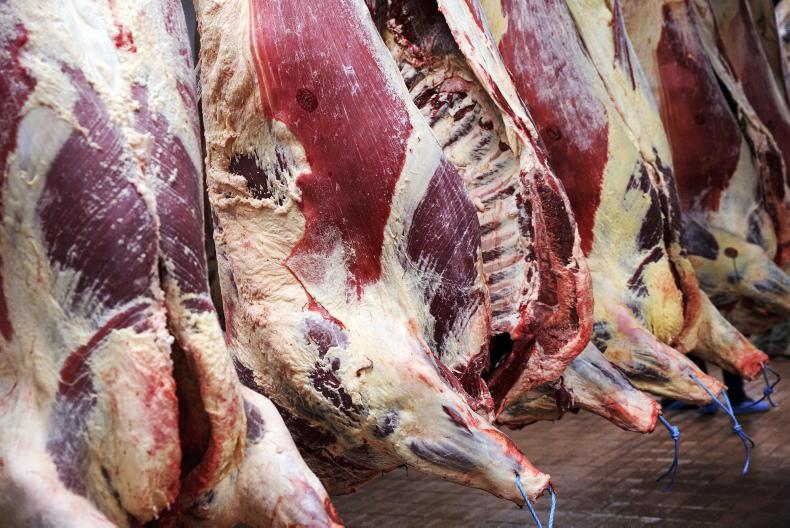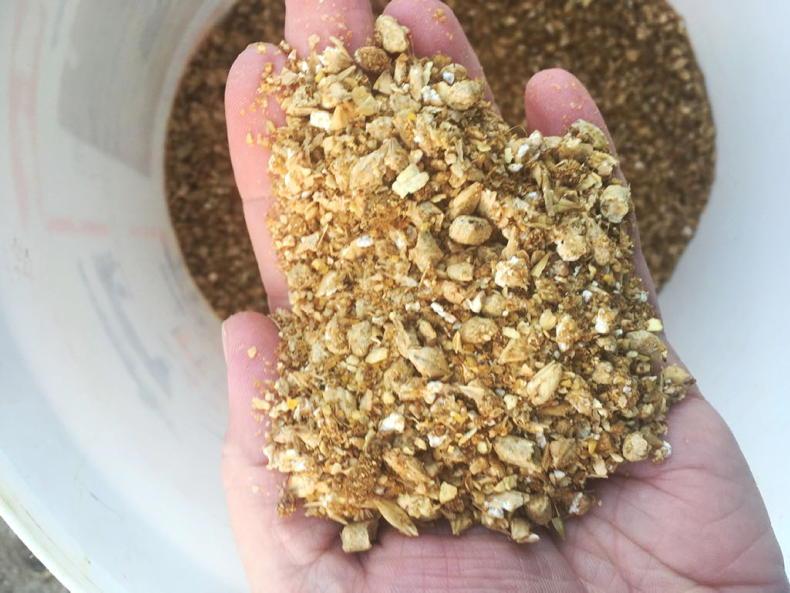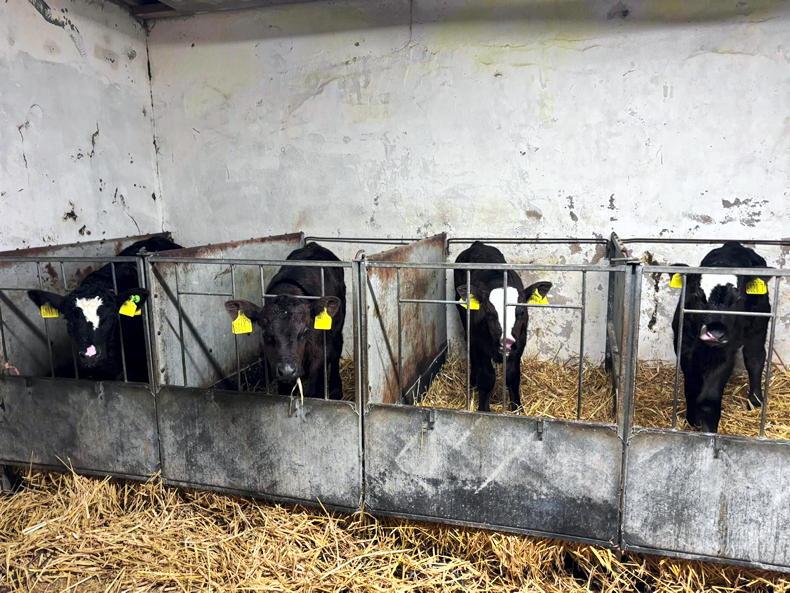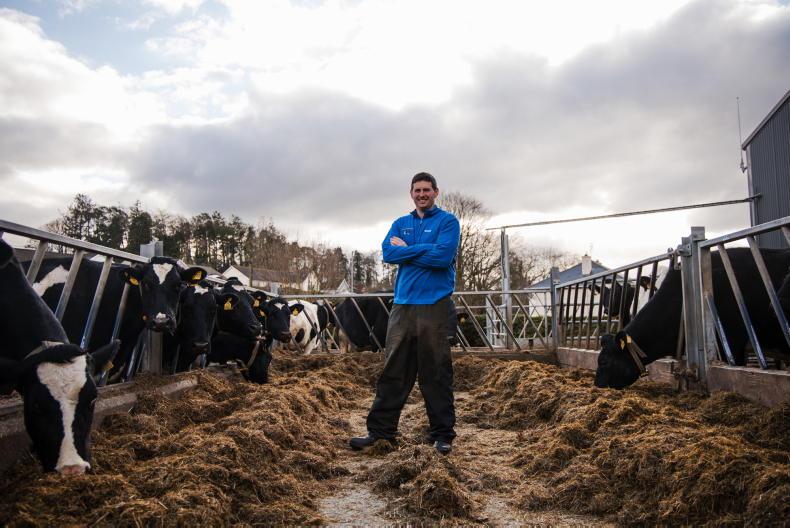Beef prices have collapsed in the past two months.
With little sign of a market recovery during the summer, the economics of finishing cattle are highly questionable.
But where farmers have plans to kill some stores off grass in late summer and autumn, outlined are five things to keep in mind.
1. Do the sums stack up?
There is no point in working for nothing and with a strong live trade, all options should be considered before committing to finishing cattle.
Do up a simple budget to see if there is a return from killing cattle off grass. Start by putting a value on what animals are potentially worth if sold live.
A lot of grass finished cattle will be beef-sired animals originating in the dairy herd, so be realistic about what these animals are worth.
Next, what weight are animals before feeding and how long will it take to reach target finishing weight?
How much meal is likely to be fed during this period and what will it cost? Are treatments for worms required?
Tally up the potential inputs to finish cattle, add this to the starting value of cattle and include a profit margin.
Finally, what carcase weight are cattle likely to average? Divide the finishing costs by the carcase weight to get a break-even price for finishing cattle this autumn.
2. Which cattle to select?
There is little point in feeding meal for a period longer than 50 days when finishing cattle off grass, as feed conversion will drop.
Therefore, select animals within 40kg to 60kg below the target finishing weight before ramping up meal feeding.
Keep this in mind as summer transitions into autumn and grass quality declines, as meal levels will have to increase to maintain weight gain, which impacts on finishing costs.
3. Separate finishing cattle for grazing and feeding
Separate out cattle destined for finishing off grass. Give these animals priority grazing to maintain weight gain and limit meal feeding levels.
Don’t allow these animals to run with a group of lighter stores. Competition for grass will be higher and meal will be consumed by lighter animals that are not giving an economic return.
4. Parasite control
Before meal feeding starts, makes sure animals have been treated for internal parasites that can potentially hinder performance.
5. Meal feeding
It is possible to finish some cattle off high-quality, high dry matter grass without meal. But as summer moves into autumn, grass quality will decline, so meal feeding will be required.
Choose a high-energy, low-protein ration to finish cattle. Rolled barley and sugar beet pulp, or soya hulls, is often adequate, but maize helps finish animals with more of a continental breed influence.
On good quality grass, feeding 2kg to 3kg/head will suffice for heifers. Limit meal feeding to 40 days for animals with native breeding and 50 days for continental breeding.
With steers, offer 3kg/day for native breeds and 4kg/day for continental types for 50 days, split between a morning and evening allocation. As grass supply tails off, increase meal levels accordingly.
Read more
Beef slide continues as Australian beef docks in UK
Finisher frustration building as losses mount
Beef prices have collapsed in the past two months.
With little sign of a market recovery during the summer, the economics of finishing cattle are highly questionable.
But where farmers have plans to kill some stores off grass in late summer and autumn, outlined are five things to keep in mind.
1. Do the sums stack up?
There is no point in working for nothing and with a strong live trade, all options should be considered before committing to finishing cattle.
Do up a simple budget to see if there is a return from killing cattle off grass. Start by putting a value on what animals are potentially worth if sold live.
A lot of grass finished cattle will be beef-sired animals originating in the dairy herd, so be realistic about what these animals are worth.
Next, what weight are animals before feeding and how long will it take to reach target finishing weight?
How much meal is likely to be fed during this period and what will it cost? Are treatments for worms required?
Tally up the potential inputs to finish cattle, add this to the starting value of cattle and include a profit margin.
Finally, what carcase weight are cattle likely to average? Divide the finishing costs by the carcase weight to get a break-even price for finishing cattle this autumn.
2. Which cattle to select?
There is little point in feeding meal for a period longer than 50 days when finishing cattle off grass, as feed conversion will drop.
Therefore, select animals within 40kg to 60kg below the target finishing weight before ramping up meal feeding.
Keep this in mind as summer transitions into autumn and grass quality declines, as meal levels will have to increase to maintain weight gain, which impacts on finishing costs.
3. Separate finishing cattle for grazing and feeding
Separate out cattle destined for finishing off grass. Give these animals priority grazing to maintain weight gain and limit meal feeding levels.
Don’t allow these animals to run with a group of lighter stores. Competition for grass will be higher and meal will be consumed by lighter animals that are not giving an economic return.
4. Parasite control
Before meal feeding starts, makes sure animals have been treated for internal parasites that can potentially hinder performance.
5. Meal feeding
It is possible to finish some cattle off high-quality, high dry matter grass without meal. But as summer moves into autumn, grass quality will decline, so meal feeding will be required.
Choose a high-energy, low-protein ration to finish cattle. Rolled barley and sugar beet pulp, or soya hulls, is often adequate, but maize helps finish animals with more of a continental breed influence.
On good quality grass, feeding 2kg to 3kg/head will suffice for heifers. Limit meal feeding to 40 days for animals with native breeding and 50 days for continental breeding.
With steers, offer 3kg/day for native breeds and 4kg/day for continental types for 50 days, split between a morning and evening allocation. As grass supply tails off, increase meal levels accordingly.
Read more
Beef slide continues as Australian beef docks in UK
Finisher frustration building as losses mount










SHARING OPTIONS